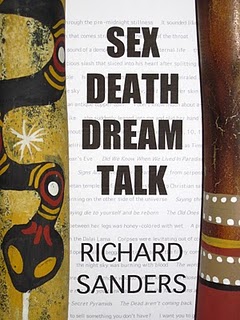
(Now on Amazon, Kindle, iPad and Smashwords)
There were no eyewitnesses to the murder, just earwitnesses. The people who lived just north of Dominicus Park all reported the same thing—terrifying, drawn-out, phantom-human screams that cut through the pre-midnight stillness of the cold November night. Eleven calls were made to 911 in the first minute alone. No one could see what was happening but they all said the cries were coming from the same place, the part of the park that was walled-off from view by a grove of cypresses and pines. And all the callers stressed the horror of the noise. It sounded like a head-back howl, the thunder of pain that comes straight from the rear of the throat, a trapped-animal jungle shriek, the sound of a demon screaming for its eternal life.
Suffolk County police units responded by midnight. There was no doubt about the source of the sound. They found the body of an elderly, large-framed African-American man in the middle of the grove, bathed in so much blood it looked as if the ground itself was bleeding. No ID, no wallet. From the Salvation-Army style of his clothes, he could’ve been homeless. He’d been stabbed multiple times, though the fatal wound had to have been the vicious slash that sliced into his heart after splitting his chest open from nipple to nipple. He was a barrel-chested man, and after he’d fallen on his back, the blood from the gash had flowed back toward his face, so that by the time the police found him his head was a mask of congealed red.
A bad way to go. Still, for those who heard them, it was the death cries that stayed lodged in the spine. They were haunting and profoundly strange, agony wails that spiraled up from the earth and echoed along the sky.As soon as I heard those screams, one woman said, I knew I’d be living that night for the rest of my life.
>>>
I remember reading those words, remember thinking her quote would have to be used in the story. I remember the words because the murdered man turned out not to be some homeless, anonymous victim. Based on the missing-person’s report his daughter filed the next day, the police quickly determined that he was Isaiah Robonnet, one of the country’s most fabled folk artists.
I didn’t know much about him or his work at the time, but as a top editor at Real Story, I knew Robonnet was good material. One of 13 kids, raised in and around New Orleans. Confined to institutions for the feeble-minded (a term much used back in the day) most of his childhood. Became a self-taught painter later in life, known for his incredible visionary canvases. Emerged as one of the symbols of New Orleans’ post-Katrina renaissance.
And now he was dead, catching some nasty and obsessive knifework in the middle of a suburban park in Long Island, N.Y. I assigned reporters to cover the killing; I edited the posts that ran on the website and the larger story that ran in the magazine. Robonnet had been visiting his daughter’s house on the north shore of Nassau County that night and he’d gone out for a drive. How and/or why did he end up maybe 50 miles away, slaughtered in a small Suffolk County town where no one knew him? I just wanted to know. I thought it would make a good story and I just wanted to know.
I had no idea where my curiosity was going to lead.
###
http://www.amazon.com/Death-Dream-Talk-Richard-Sanders/dp/1451522223/ref=ntt_at_ep_dpt_6
About Richard Sanders
I worked as an Executive Editor at Entertainment Weekly for 11 years and (in two separate stints) at People magazine and people.com for 12 years. I often speak to young journalists and try to use myself as an example for inspiration—a guy who spent time in jail, rehab and a psych ward and somehow went on to become a successful editor at Time Inc. and managed to stay sane and alive. I’ve tried to reflect those experiences in my books.
View all posts by Richard Sanders

Leave a comment